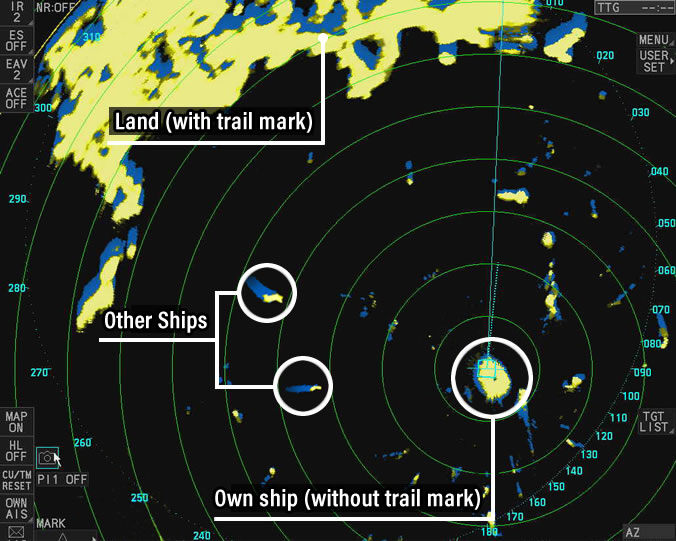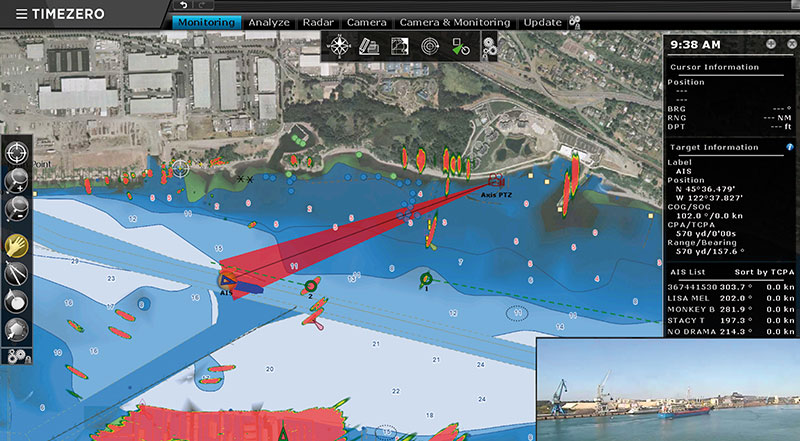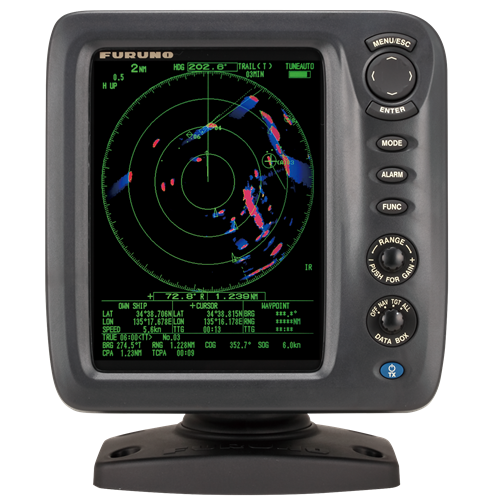True Echo Trails
True Echo Trails display the movement paths and speeds of vessels on radar for navigation clarity.
What is True Echo Trails?
True Echo Train technology visually represents the movements and speed of vessels by displaying a residual image (trail) over time.
True Echo Trails by Furuno is an advanced radar technology that enhances situational awareness for mariners by visually displaying the historical movement path of targets detected by radar.
This technology is crucial for interpreting the motion of other vessels and potential hazards in real-time, providing a clear visual trail that indicates the direction and speed of moving objects.
FURUNO TECHNOLOGY
How does True Echo Trails work?
Comparison of trail display when the ship goes straight to the ocean
/img_true_et01_en.gif?width=600&height=532&name=img_true_et01_en.gif)
/true%20echo.jpg?width=540&height=810&name=true%20echo.jpg)
Displaying the trail of any echo
For instance, when a ship is traveling at high speed, it will leave long trails. On the other hand, trails will not appear for stationary objects like docked ships or buoys. If a moving vessel stops, its trail will slowly decrease in length.
Product Manager
at Furuno
"True Echo Trails technology is pivotal in enhancing navigational safety and decision-making. By providing a clear historical path of moving targets, this technology allows operators to predict potential risks and adjust their navigation strategies proactively. It's not just about seeing what is around you, but understanding the behavior of those elements over time, enabling more informed and situationally aware decisions on the water."

Relative trail
Trail based on own ship

True Trail
Trail mark relative to land and water surface

Real time video camera monitoring integrated into the satellite view
Essential to prevent accidents and ensure safe berthing and efficient transportation of passengers and goods.

Radar echoes displayed on the map
To safeguard fragile ecosystems and combat illegal fishing, unauthorized anchoring, or other threats to marine protected areas.
Radar - High - Definition Digital Vision For Your Boat, Ensuring the safety of your voyage
Discover the latest in maritime safety and comfort with Furuno's advanced radar technology. Wheter you're navigating through calm waters or facing challenging conditions, Furuno's radars are designed to ensure your journey is secure. Equip your vessel with a radard that provides critical visibility and protection against potential hazards. Explore the innovative technologies that make Furuno radars a trusted choice for seafarers worldwide.

The two types of echo trails
There are two different kinds of echo trails: true trails and relative trails. Relative trails show how other vessels move in relation to your ship’s movement. In contrast, true trails display the actual movement of other ships relative to the land, not your vessel. Consequently, stationary ships do not produce trails.
True trail function from a bird's-eye view
The True Echo Trail technology displays the paths of other ships on the radar screen from an aerial perspective, making it appear as if viewed from above. It accurately shows the real speed of all vessels, enabling users to understand their movements more intuitively. Additionally, Furuno's true trail function allows for the use of the Head-Up mode.
Products employing this radar technology
These radars were developed to guarantee situational awareness as they reliably display in an intuitive way the movement of other vessels.


RADAR
Our radars deliver accurate images and reliability in all environments, combining superior performance with durability against harsh conditions.
SONAR
Our sonar technologies offer unparalleled accuracy and sustainability, ensuring optimal performance and eco-friendly practices for all fishing vessels.
FISH FINDER
Furuno's fish finder technologies have revolutionized fishing, offering unparalleled accuracy and reliability since their inception.
AUTOPILOT
Furuno's autopilot technologies enhance navigation safety and precision through advanced algorithms, real-time adjustments, and user-friendly interfaces.
CHARTPLOTTER
Our chartplotter technologies enhance maritime safety and simplify navigation by providing real-time data, precise positioning, and the best marine charts.
USER INTERFACE
User interface technologies simplify marine instrument operation, enhancing navigation efficiency and safety with intuitive, user-friendly controls.
Line of sight of a Radar
Radar waves propagate along Earth's surface, but due to diffraction effect, these waves propagate in a slightly curved manner. The degree of diffraction is determined by many factors including atmosphere density. In general, the diffraction curve allows the wave to go beyond the line-of-sight by about 6%
D=2.2(√H1 + √H2)
D: Radar line-of-sight (NM)
H1: Altitude at which the Radar is installed (m)
H2:Altitude of the object reverberating the signal (m)
RADAR PRODUCTS
Contact one of our departments to solve your problem
ACCESORIES
Contact one of our departments to solve your problem



1815
€120
VAT Included (20%)

1815
€120
VAT Included (20%)

1815
€120
VAT Included (20%)

1815
€120
VAT Included (20%)

1815
€120
VAT Included (20%)

1815
€120
VAT Included (20%)